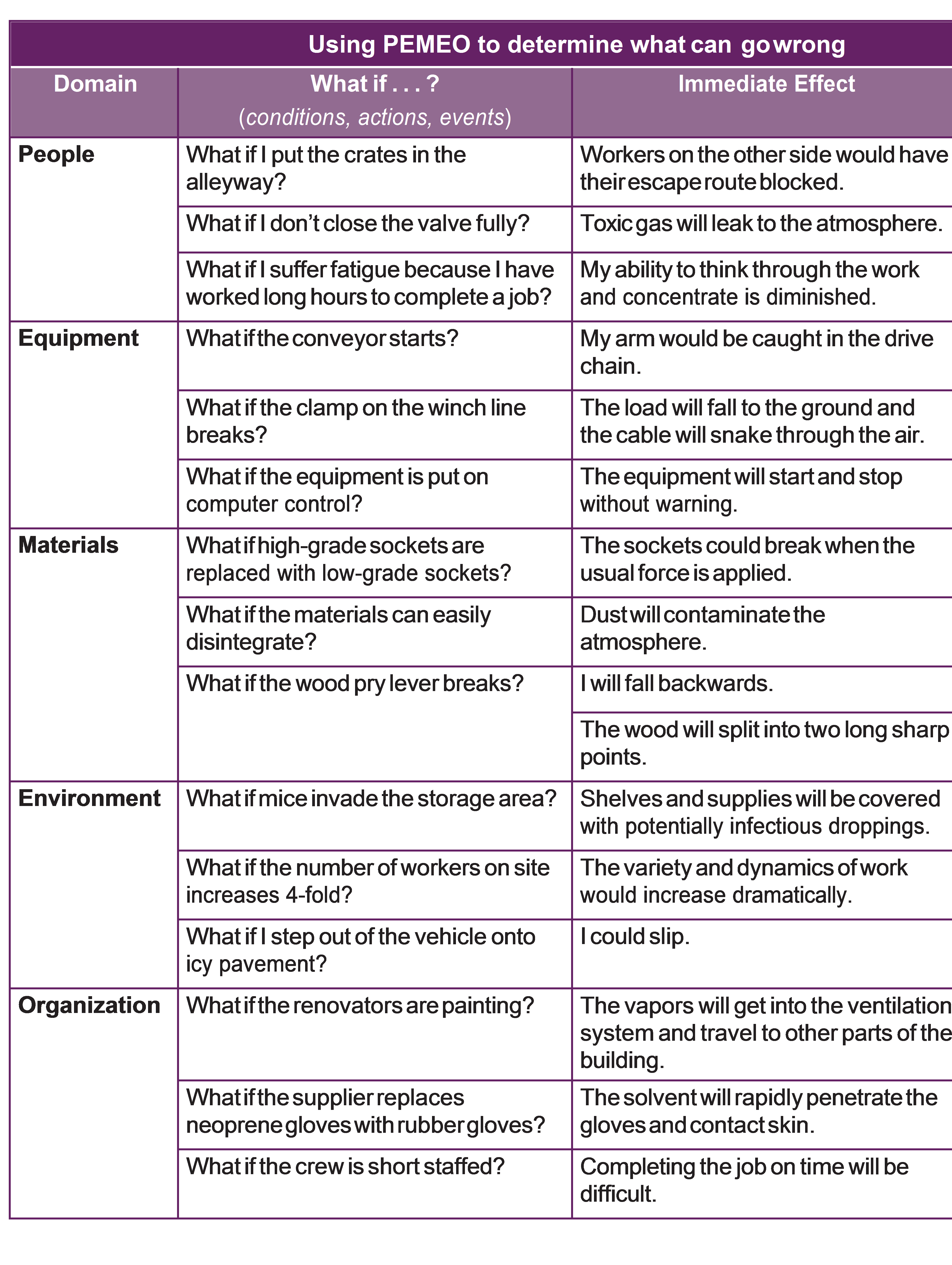Asking quality What if . . . ? questions
What if . . . ? questions can be very
helpful for determining what can go wrong and for identifying potential
changes. But, what What if . . . ? questions
should be asked? I once saw a Safe Work Permit that suggested asking What if . . . ? questions but I didnít
know what types of What if . . . ?
questions to ask. Years later, while we were field-testing SafeThink, our cognitive-based
safety strategy, someone suggested that we should include questions about what
could go wrong. Someone else said, ďGordon, there would be way too many
questions to ask.Ē Thatís when I came up with the idea of using a structured
process to ask quality What if . . . ?
questions. This structured approach uses PEMEO to focus the What if . . . ? questions. Further SafeThink field tests proved
that this thinking strategy was very useful for asking quality questions about
what could go wrong.
Each
domain of PEMEO (e.g., people, equipment) provides a focus for asking questions
that are most likely relevant to the work. Here are some examples of using
PEMEO to ask What if . . . ? questions about what could go wrong.

After
determining the possible immediate effects, determine how PEMEO is affected and
how to prevent the situation from occurring or to reduce the possible
consequences.
Many people had difficulties in identifying the types of concerns that could be addressed for the Organization domain. The book MetaThink
identifies eleven types of organizational concerns including:
∑
Poor scheduling
∑
Failure to
communicate priorities
∑
Shortage of staff
∑
Introduction
of new hazards
Refer
to MetaThink for a detailed
explanation on asking quality What if . .
. ? questions to determine what can go wrong and the potential effects on
PEMEO. Refer to the book SafeThink
for specific examples of asking What if .
. . ? questions to determine what can go wrong that could create or lead to
a hazardous situation.
Do
you think that using PEMEO is a useful approach to ask What
if . . . ? questions to identify what could go wrong? What
strategy do you use to think through situations to predict what could go wrong?
Gordon
Shand is President of HDC Human Development Consultants Ltd. He has 35 years of
experience designing and developing educational and training programs that have
excellent practical value and contribute to the customerís business success. www.hdc.ca